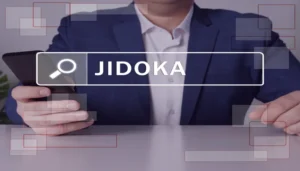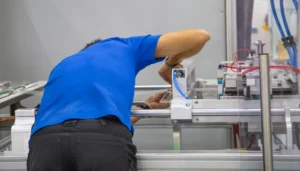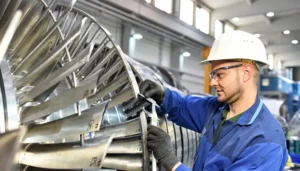Summary: Visual inspection plays a crucial role in the manufacturing industry as a critical quality control step. It involves examining products, components, and materials using the naked eye or aided by various inspection techniques. By visually inspecting items, defects and inconsistencies can be detected, ensuring that only high-quality products reach the market. In this article, we will explore the significance of visual inspection in manufacturing, the inspection techniques employed, and the benefits it offers manufacturers.
The Importance of Visual Inspection in Quality Control
Visual inspection is a form of non-destructive testing (NDT) that relies on the human eye to detect product defects and anomalies. It is a cost-effective method applied across various manufacturing industries and production lines. By visually inspecting items, manufacturers can identify issues such as surface cracks, dents, scratches, discoloration, or other visual imperfections that may impact the product’s functionality or appearance.
Detecting Defects with the Naked Eye
The naked eye is a powerful tool in VI. Experienced inspectors can spot even the slightest irregularities that may go unnoticed by automated systems or specialized equipment. VI allows for a detailed examination of the product’s surface, texture, dimensions, and overall quality.
Non-Destructive Testing (NDT) and Visual Inspection
Visual inspection is a non-destructive testing method that complements other NDT techniques such as ultrasonic testing, X-ray inspection, or magnetic particle testing. While these methods detect internal defects or issues that are not visible to the naked eye, visual inspection focuses on the external characteristics of the product. By combining VI with other NDT methods, manufacturers can perform comprehensive quality control checks and ensure the overall integrity of their products.
Inspection Techniques for Visual Quality Control
Automated Visual Inspection
In recent years, automated VI systems have gained popularity in the manufacturing industry. These systems use advanced camera systems, computer vision algorithms, and machine learning techniques to inspect products rapidly and accurately. By deploying automated visual inspection, manufacturers can increase inspection speed, reduce human error, and achieve consistent quality control standards across the production line.
Remote Visual Inspection (RVI)
Remote visual inspection (RVI) is a technique that allows inspectors to collect visual data remotely, without having to be physically present at the inspection site. RVI tools, such as robotic crawlers or drones equipped with high-quality cameras, enable inspectors to access difficult-to-reach areas or inspect assets in hazardous environments, such as confined spaces or high elevations. RVI enhances safety, efficiency, and the effectiveness of VIs in manufacturing.
Use of Drones in Visual Inspection
Drones have revolutionized VI processes by providing a bird’s-eye view of assets and manufacturing facilities. With advancements in drone technology, manufacturers can perform visual inspections of large structures, such as storage tanks or pressure vessels, quickly and accurately. Drones equipped with high-resolution cameras capture images and videos that can be analyzed for defects and anomalies. This form of visual inspection is particularly useful in industries where manual inspections are challenging or time-consuming.
Visual Inspection Techniques and Equipment
Various VI techniques and equipment are used to ensure product quality. These include optical inspection systems, non-destructive testing methods, and computerized maintenance management systems (CMMS). Optical inspection systems use advanced imaging technologies to capture high-resolution images of products and components for detailed analysis. Non-destructive testing methods, such as ultrasonic or corrosion testing, help identify defects that may not be visible to the naked eye. CMMS tools assist in conducting visual inspections, collecting data, and managing inspection records efficiently.
The Visual Inspection Process in Manufacturing
Implementing Visual Inspection Systems
To integrate visual inspection into the manufacturing process, companies must establish standard operating procedures (SOPs) and guidelines for inspectors. These SOPs outline the inspection methods, criteria for acceptability, and reporting procedures. Additionally, plan and implement the deployment of automated systems and inspection equipment to ensure smooth operations. Regularly conduct inspections and audits to verify the effectiveness of the visual inspection process and make necessary improvements.
Training and Certification for Visual Inspectors
Visual inspectors play a vital role in maintaining product quality and ensuring compliance with industry standards. To perform visual inspections effectively, inspectors undergo training and certification programs. These programs provide them with the knowledge and skills to accurately identify defects, interpret inspection results, and adhere to safety protocols. Continuous training and skill development are essential to keep up with visual inspection technology and technological advancements.
Advancements in Visual Inspection Technology
Artificial Intelligence and Machine Learning in Visual Inspection
Artificial intelligence (AI) and machine learning algorithms have significantly enhanced the capabilities of visual inspection systems. By analyzing vast amounts of visual data, these algorithms can accurately identify complex patterns, defects, and anomalies. Machine learning algorithms can be trained using labelled data to recognize specific defects or quality issues, making the inspection process more efficient and reliable.
Deep Learning for Enhanced Defect Detection
The Deep learning, a subset of machine learning, has shown great potential in improving defect detection in visual inspection. Deep learning models, such as convolutional neural networks (CNNs), can learn from large datasets and extract meaningful features from images or videos. These models can identify subtle defects or variations that may be challenging to detect with traditional methods. Deep learning algorithms continue to evolve, enabling manufacturers to achieve higher inspection accuracy and efficiency.
Benefits of Visual Inspection in Manufacturing
Detection of Obvious Visual Defects
Visual inspection is highly effective in identifying obvious visual defects that may affect product functionality, aesthetics, or safety. Manufacturers can prevent defective items from reaching the market by inspecting products on the production line for obvious visual defects. This helps maintain customer satisfaction, reduce returns or recalls, and protect the brand’s reputation.
Improved Quality Checks and Productivity
By integrating visual inspection into the manufacturing process, quality checks are performed on randomly selected products, ensuring that defects are detected early. This proactive approach helps identify and address potential issues before they escalate, reducing scrap, rework, and production delays. Moreover, automated visual inspection systems and efficient inspection techniques make inspections faster and more consistent, improving overall productivity.
Enhanced Safety and Risk Mitigation
Visual inspection techniques, such as RVI and the use of drones, contribute to enhanced safety in manufacturing environments. Inspectors can assess the condition of assets or inspect equipment in confined spaces without exposing themselves to potential hazards. This reduces the risk of accidents, injuries, and occupational hazards associated with manual inspections.
Asset Management and Maintenance
Visual inspection plays a crucial role in asset management and maintenance. By regularly inspecting equipment, structures, or machinery, manufacturers can assess their current condition and identify potential issues or maintenance requirements. This proactive approach helps prevent unexpected breakdowns, extends the lifespan of assets, and reduces maintenance costs.
Challenges and Future of Visual Inspection
While visual inspection offers significant benefits to manufacturers, it also poses challenges. The reliance on human inspectors introduces the possibility of human error, fatigue, or inconsistency. Furthermore, as manufacturing processes become more complex, defects may become harder to detect visually. To overcome these challenges, manufacturers invest in advanced technologies such as automated systems, artificial intelligence, and machine learning algorithms to enhance inspection accuracy and efficiency.
The future of visual inspection in manufacturing holds promising opportunities. Continued computer vision, machine learning, and robotics advancements will lead to more sophisticated inspection techniques and equipment. Integration with Internet of Things (IoT) devices and data analytics will enable real-time monitoring and predictive maintenance.
FAQ | Visual Inspection
What is visual inspection in manufacturing?
VI in manufacturing refers to the process of carefully examining products, components, and materials using the naked eye or aided by various inspection techniques. It aims to detect visual defects, such as cracks, dents, scratches, or discoloration, to ensure that only high-quality products are released to the market.
Why is VI important in manufacturing?
VI is important in manufacturing for several reasons:
- It helps identify visual defects that may impact product functionality, durability, or aesthetics.
- It ensures that only defect-free items are delivered to customers, maintaining their satisfaction.
- It helps prevent costly recalls, returns, and reputation damage due to poor quality products.
- It contributes to enhanced safety by identifying potential hazards or issues during inspections.
What are the techniques used in visual inspection?
Various techniques are used in VI, including:
- Manual inspection using the naked eye by trained inspectors.
- Automated VI systems that utilize cameras and computer vision algorithms.
- Remote VI using tools like robotic crawlers or drones with cameras.
- Non-destructive testing (NDT) methods, such as ultrasonic testing or X-ray inspection, in conjunction with VI.
How does visual inspection improve quality control in manufacturing?
VI improves quality control in manufacturing in the following ways:
- It helps detect defects early in production, allowing for timely corrective actions.
- It ensures consistency in product quality by applying standardized inspection criteria.
- It proactively addresses quality issues by reducing scrap, rework, and production delays.
- It enhances customer satisfaction by delivering defect-free products.
Can visual inspection be automated?
VI can be automated using advanced technologies such as computer vision and machine learning. Automated VI systems use cameras and algorithms to analyze images or videos of products, enabling rapid and accurate defect detection. Automation improves inspection speed, reduces human error, and ensures consistent quality control standards.
What are the benefits of using drones for visual inspection?
Drones offer several benefits for VI in manufacturing, including:
- Access to difficult-to-reach or hazardous areas, such as confined spaces or high elevations.
- High-resolution aerial imaging for comprehensive inspections of large structures or facilities.
- Improved safety for inspectors by reducing their exposure to potential hazards.
- Time and cost savings compared to manual inspections in challenging environments.
How can artificial intelligence and machine learning enhance visual inspection?
Artificial intelligence (AI) and machine learning can enhance VI by:
- Analyzing large amounts of visual data quickly and accurately.
- Identifying complex patterns, defects, or anomalies that may be challenging for humans to detect.
- Enabling predictive maintenance and real-time monitoring by learning from historical inspection data.
- Improving the efficiency and effectiveness of automated VI systems.
Image: Adobe Stock – Copyright: © PZPIXEL.AI – stock.adobe.com






